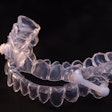
A Montana jury yesterday awarded $3.2 million to a woman who sued the makers of the bone-strengthening drug Zometa. The verdict could set a precedent for hundreds of similar cases pending against the manufacturers of Zometa and other bisphosphonate-based products.
Peggy L. Stevens, 57, of Missoula claimed that Novartis Pharmaceuticals, which manufactures Zometa, failed to disclose dental health risks associated with use of the drug.
The verdict could significantly affect hundreds of other cases filed against the same company in the U.S., according to legal experts.
— Terry Trieweiler, attorney
"I hope this verdict has a positive effect on the other cases," said Terry Trieweiler, a Missoula attorney representing Stevens, in a DrBicuspid.com interview. "It proves that Novartis' concealment of the risks associated with its drug is not acceptable to ordinary people. They may get away with concealing it from Congress and the U.S. Food and Drug Administration, but people will hold them accountable."
Stevens, who suffers from lymphoma, was given Zometa intravenously for two and a half years during cancer treatment. Her dental problems started when she had a tooth extracted and subsequently developed osteonecrosis of the jaw (ONJ).
"Novartis did not timely disclose to the medical community that people on Zometa could suffer from this side effect -- that the use of this medicine could lead to ONJ," said Trieweiler.
The problem lies with the main ingredient in Zometa and other drugs that build bone mass and stem bone loss, known as bisphosphonates. Research has shown that bisphosphonate-related ONJ is triggered primarily by increased use of bisphosphonate-based drugs. It is defined by masses of exposed bone in the mouth where the gums have completely fallen away from the bone and the bone is dead. Patients who have been on the medication for a certain period of time are particularly at risk for ONJ if they undergo invasive dental procedures, such as tooth extractions.
Following the tooth extraction, Stevens developed ONJ and lost her job, said Trieweiler. She also has had debilitating pain that has altered her life. The jury awarded her $822, 000 for lost income, and the remaining amount was awarded for pain, mental suffering, and the alteration to her normal course of life.
There currently are 550 similar cases pending against Novartis in the U.S., according to Trieweiler, including multidistrict litigation in Tennessee, where hundreds of cases have been consolidated, and a mass tort action in New Jersey.
Novartis is not alone in these legal battles. Merck is also facing hundreds of lawsuits contending that its bone-enhancing drug Fosamax can lead to ONJ. Although the first lawsuit against Merck regarding the relationship between Fosamax and the development of ONJ ended in a mistrial, with hundreds of similar lawsuits pending the question still lingers.
The difference in the first case against Merck, however, was that the plaintiff had been taking Fosamax orally. In Stevens' case, she had been given Zometa intravenously, which is common for many cancer patients. A 2008 study in the Journal of the American Dental Association (January 2008, Vol. 139:1, pp. 23-30) found that oral administration of bisphosphonates decreases the risk of adverse bone outcomes, while intravenous administration "strongly and significantly increases the risk (p < 0.05) of adverse jaw outcomes or surgery."
The first of the remaining cases against Novartis is slated to go to trial in March 2010.
Copyright © 2009 DrBicuspid.com



















